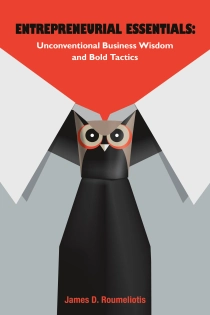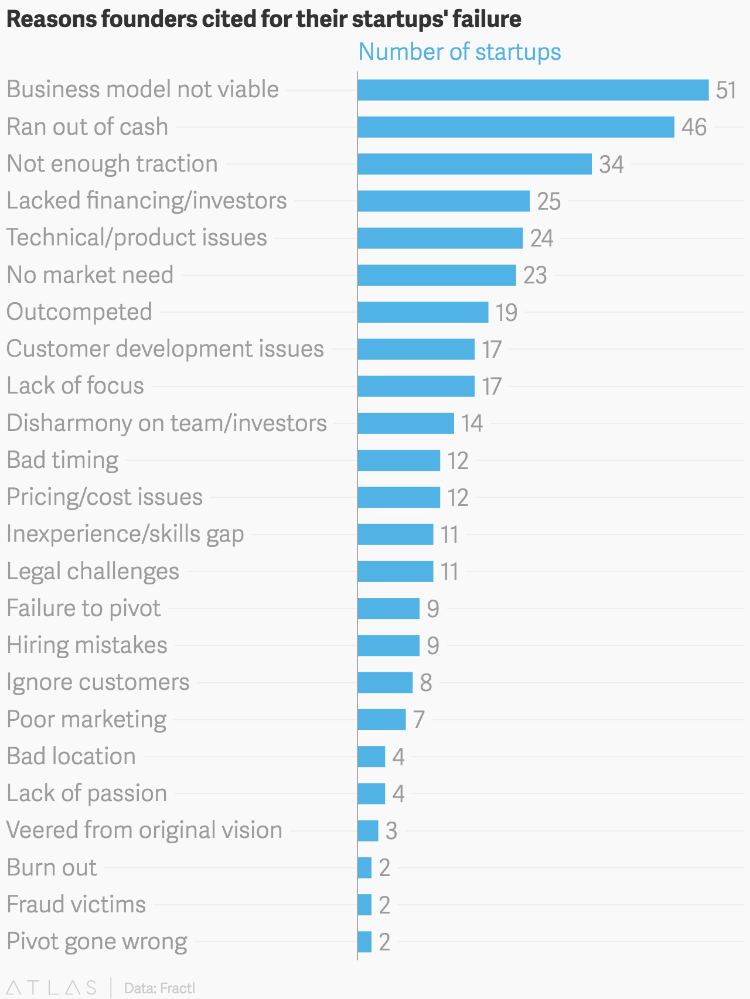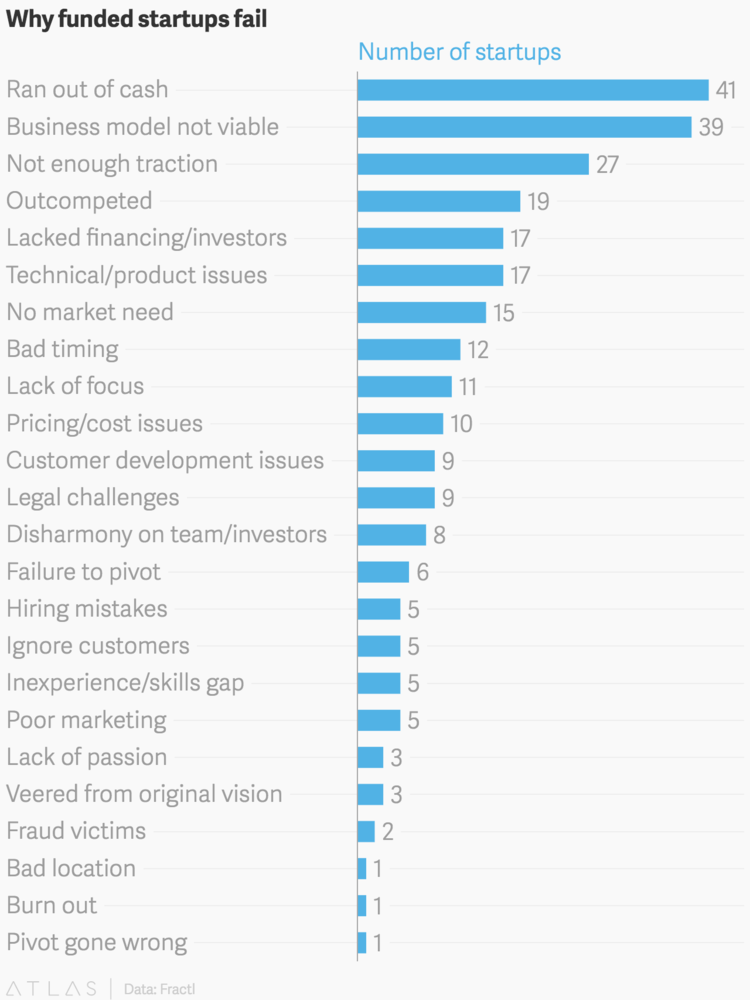Viewpoint by James D. Roumeliotis













Prior to taking a plunge in your start-up, you conduct thorough research, plan meticulously, execute strategy flawlessly ‒ but over time, you barely survive, or worst yet, fail altogether. What gives?
According to statistics, as the latest available numbers from the two U.S. government statistical agencies responsible for providing data about new businesses illustrate, The Census Bureau and the Bureau of Labor Statistics, five years after new establishments were founded (1995, 2000 and 2005 respectively), 50%, 49 and 47 percent of them (correspondingly) were still in operation.
Merely reading a business book, this article, or attending a well-regarded entrepreneurship course/program is no guarantee of success in increasing one’s odds of business success. It takes diligent implementation of a viable business plan, focus, determination, consistent and well thought out action, as well as an obsession with the customer, amongst other traits and approaches. Management of a business is not a science, it’s a practice.
SME/SMB business owners optimistic despite odds of failure
A new, independent survey has found that small and mid-size business owners share several distinct attributes that help them live their passions while adapting to the shifting economic landscape.
Commissioned by Deluxe Corp. a publicly traded company and leading provider of marketing services and business products for small businesses and financial institutions, the study surveyed more than 1,000 SMB owners around the U.S. The results showed 86 percent of the respondents believe they can do anything they set their minds to, with 77 percent also stating they would rather learn from failure instead of never trying at all.
Based on the results, it’s no wonder entrepreneurs are known as risk averse and tenacious ‒ or as some would light-heartedly state, “We’re going to succeed because they’re crazy enough to think they can.”
Pitfalls of business failure
On the whole, businesses fail due to its owners’ lack of fundamental business knowledge. Needless to say, failed businesses did not operate the same way as those that succeed. The following are oversights and inaction responsible for their demise.
- For starters, it’s going into business for the wrong reasons. If the only reasons an aspiring business person desires self-employment is making money and selling a product he/she is in love with, stick to a regular job and conduct business on the sidelines or as a hobby. Making money should not be the sole end goal. Simon Sinek, an accomplished author and adjunct staff member of the RAND Corporation, one of the most highly regarded think tanks in the world, in his popular talks worldwide, including TED, compellingly emphasizes the following:
“Why does your organization exist? Why does it do the things it does? Why do customers really buy from one company or another? Why are people loyal to some leaders, but not others? Starting with “why” works in big business and small business, in the non-profit world and in politics. Those who start with “why” never manipulate, they inspire. And the people who follow them don’t do so because they have to; they follow because they want to.”
- The business is undercapitalized: a business with too much debt and a cash flow that doesn’t support it ‒ as a result of overestimated revenues and cash flow with underestimated expenses/cost of business.
- Lacking business development – sales, the lifeblood of any business. Emphasis mainly on product rather than actually shipping quantity to its target market.
- No USP/differentiation: another me too product, price sensitive, commoditized, and failure to communicate it in a captivating way.
- Not focused on a particular market. Confused, and as a result, applying a gunshot approach. Unclear of its business model.
- Poor execution of business and marketing plan. Lack of clear focus and direction. Moreover, inability to adapt to a changing environment, as well as anticipate future trends and plan for them – market phasing out unwanted items or services.
- Poor operational management. It can be one or a combination of motives including lack of discipline, internal bickering between partners, owner arrogance, stubbornness, a closed mindset, and/or a lack of work ethic which causes complacency. Many start-ups have a carefree attitude to promote efficiency in the workplace, often needed to get their business off of the ground and persevering long afterwards.
- Business expansions that are poorly planned and not appropriately financed. Although this growth is normally viewed as a positive development, its timing, execution tactics, and inadequate funding to sustain profitable growth stifle proper business progress.
- Failing to control costs – negligent fiscal management.
- Creating dissatisfied customers: Not in touch with them along with a lack of a customer centric policy and fervent implementation with constant monitoring. Many businesses, small and large alike, offer lip service as they continue to disappoint their customers. It is a fact that the cost of acquiring a new customer is five times the cost of keeping an existing one.

7 principles for business success: Avoid being a failed business statistic
If an entrepreneur is resolute enough to increase the chances of triumph from the outset, he/she should consider several key principles. These seven beliefs have been forged through my personal experiences, those of others I have either researched/interviewed and/or advised, as well as based on long-term practice and common sense seasoned with a touch of academia.
1) A Viable Product or Service with the Right Business Model and a Passionate Person Behind it
It should fulfill a need, offer a benefit, be innovative and differentiate itself. It’s also imperative that the entrepreneur is passionate about the product/service, empowers his/her staff, as well as practices/conveys business ethics. To excel in the business, the entrepreneur must have the right mindset and attitude. This includes drive, perseverance, tenacity, and an undying belief in himself/herself and the value he/she adds.
2) Adequate Capital
Critical and can vary depending on the size of the undertaking. Start your capital search with a good business plan that shows investors and lenders your company’s potential. Expect to realistically invest about 30% of your own money based on the total value of the project. Last but not least, cash-flow is the lifeblood of your business if you’re going to sustain the operation financially.
3) Marketing, Sales and Customer Driven
Advertise, publicize, differentiate, ‒ and be compelling, as well as memorable with your messages. Deliver on those promises and constantly remain customer focused. Sales, on the other hand, is part of the marketing function. It includes business development and account management. Sales is crucial to business because it is the bottom line, whereas marketing is about getting a product known and the customer keeps your business alive.
4) People
Don’t simply HIRE well educated and experienced people but most importantly MOTIVATED, dedicated, coachable and with interpersonal skills. Moreover, make certain that the people you hire fit-in with your corporate culture.
5) Systems and Structure in Place
Every business requires a disciplined way of conducting itself. This way everyone is on the same page. Consider publishing an “operations manual” and continuously enforce its procedures. However, at the same time, it should include an element of flexibility to avert stifling the organization. Without any structure, the chances of failure increases.
6) Strict Internal Financial Controls and Adequate Cash Flow
Finances should be closely supervised, borrowing wisely and avoiding overspending. Watch your financial ratios and yields (where applicable). The success of your business is, in many ways, measured by the bottom line. Even if you hired a full-time accountant, you would still need to have a
fundamental knowledge of accounting, how it works, and how to apply its basic principles in order to run a flourishing business. Once again, “cash flow” Cash flow is of vital importance to the health of a business. One saying is: “revenue is vanity, cash flow is sanity, but cash is king”.
7) Continuous Improvement, Innovation and Sustained Growth
This is by no means a one-time event but rather an on-going process. Innovation encompasses offering distinguished and improved solutions which meet or exceed market requirements and expectations from your customers ‒ whether offering a desirable product or upgrading a service experience.
Keep in consideration ‒ govern oneself accordingly
Entrepreneurs, and inventors alike, may be quite well versed with the products and/or services offered, but not necessarily with running their business including a bucket list of daily administrative tasks. Most notably, sales, marketing and finance/accounting undertakings. This is where honest consideration should be given in either bringing in a partner to complement the entrepreneur’s weaknesses or an external adviser and/or mentor to guide him/her. A sounding board should not be dismissed as an advantage solely for larger organizations. Seeking professional help is an important way to avoid or plan for business challenges.
Prior to drafting a business plan as the roadmap, which assists one in avoiding the pitfalls of running a business, plotting a business model should be considered as a prelude to the business plan. The idiom “putting the cart before the horse” clearly reminds us of this erroneous and common approach ‒ in this case, the business plan preceding the business model or lack thereof. The business model includes the components and functions of the business, as well as the revenues it generates and the expenses it incurs. It is part of the business strategy.
Typically, small businesses with inept ownership usually fail in the first year or two, but even companies in their growth stage can stumble badly when they outgrow the capabilities of the founding team. Research by the U.S. Bureau of Labor Statistics demonstrates that nearly 6 out of 10 businesses shut down within the first 4 years of operation.
Enterprises spanning a wide array of industries, have earned distinction as “well-” or “best-” managed” by demonstrating business excellence through a meticulous and independent process that evaluates their management abilities and practices – by focusing on innovation, continuous training, brainstorming and caring for their employees’ well-being – as well as investing in meeting the needs of their clients. Marketing maven and renowned author, Seth Godin, succinctly puts it this way:
“Many entrepreneurs use an innovation to make an impact, but the hard part, the part that we’re rewarded for, is engaging with the user, the audience, the market. Bringing something to people who didn’t think they wanted it, know about it or initially welcome it, and make a difference.”
In the end, small businesses are started and managed by entrepreneurs, who with all their best intentions, are highly motivated but typically lack training in standard business practices. Thus, entrepreneurs with little more than a great idea, limited funds and a lack of management/operations skills and experience are prone to failure without the resources that can sustain and help grow their business.












___________________________________
Request your TWO FREE chapters of this popular book with no obligation.





























































































































